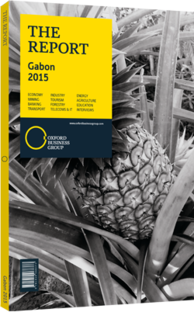Bernard Bartoszek, Former President, Federation of Gabonese Insurance Companies: Interview

Interview: Bernard Bartoszek
How did the country’s insurance sector evolve in 2014 in terms of premiums?
BERNARD BARTOSZEK: According to our most recent statistics, the insurance sector posted steady growth of 3.31% in 2014 in spite of social tensions and the drop in oil prices. Total premiums amounted to over CFA118bn (€177m), up from CFA114bn (€171m) in 2013. The growth was mainly driven by the non-life segment, which grew by 3.8% and accounted for 84.9% of sector turnover. When we look at the figures in detail, car insurance premiums increased by 5.8% to reach CFA30.61bn (€45.9m). They accounted for 25.8% of Gabon’s total premiums. This growth is primarily due to the enforcement of Article 13 since 2011 which requires car owners to pay upfront for an insurance contract. Miscellaneous insurance experienced dramatic growth, up 25.6% in 2014 to reach CFA6.02bn (€9.03m). The life-sector remained steady with a turnover of CFA17.89bn (€26.8m), compared to CFA17.82bn (€26.7m) in 2013. However, some sub-sections experienced a sharp increase, namely mixed insurance, up 54.7% with CFA1.93bn (€2.89m), and death cover, up 4.8%, with CFA5.98bn (€8.97m).
Nonetheless, capitalisations decreased by 8.19%. The health segment grew by 2.21% with CFA22.07bn (€33.1m). Overall, the consolidation of the sector’s total turnover in 2014 reflected our forecasts. It is worth highlighting the sector has experienced an upward trend over the past five years, with average annual growth of around 9.5%. We are now forecasting an operational growth rate of 6-7% for 2015, slightly higher than the overall organic growth for Gabon, which is expected to be between 5% and 6%.
What are the main engines of growth for 2015?
BARTOSZEK: The growth of insurance premiums will be mainly driven by better domestic penetration of the corporate segment. It is also worth mentioning that the insurance sector is mainly composed of the corporate segment, which accounts for 80% of premiums, with retail making the other 20%. The vast majority of premiums are exported through fronting operations, as local insurers do not have the capacity to cover large-scale risks like offshore activities or major industrial facilities. Small and medium-sized enterprises (SMEs) are largely under-insured; we estimate only 10-15% are covered today.
In the retail sector, growth will primarily be driven by the non-life segment. Car insurance will remain the main driver of growth, while travel and homeowners insurance should also take off. We estimate that the potential of growth for homeowners’ insurance will be 15-20% annually over the next few years. Life insurance has been growing more than non-life insurance throughout the year, even though 2014 growth was lower. There have been substantial changes with reforms in management of the health sector. The new health care system will be based on the third-party system, modelled on France. Firms will be reformed as mutual insurance companies and will be responsible for reimbursing health care costs not covered by the National Insurance and Social Welfare Fund. Insurers will also be keen to offer new products, such as funeral insurance.
What further strategies can be rolled out to boost insurance penetration rates?
BARTOSZEK: In the retail segment operators can step up their awareness campaigns to boost penetration, especially in rural and peri-urban areas. Gabon is in essence a brokerage market, as brokers have 60% of market share. The development of new distribution channels will contribute to the development of insurance visibility. For example, bancassurance is quite new but has posted steady growth, especially in the non-life segment. The take-off of mobile banking also widens the scope of possibilities for insurers to launch more accessible products for new consumers.
You have reached the limit of premium articles you can view for free.
Choose from the options below to purchase print or digital editions of our Reports. You can also purchase a website subscription giving you unlimited access to all of our Reports online for 12 months.
If you have already purchased this Report or have a website subscription, please login to continue.

